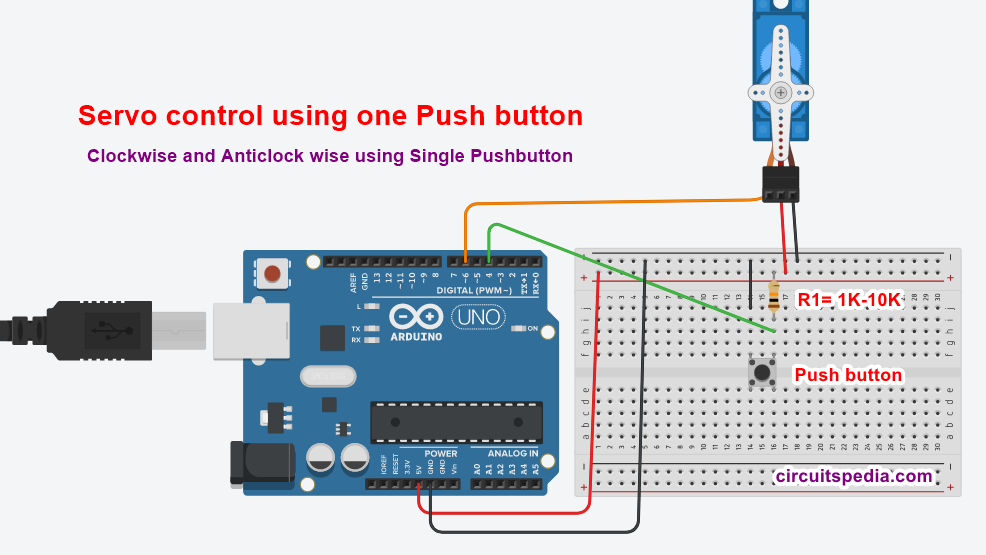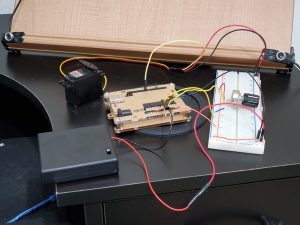
If it is attached without a switch, the electromagnet inside the brake will eventually drain the batteries.
Controlling speed servo motor arduino series#
One wire has a switch connected in series with it so that the brake can be toggled on and off.


In the example above, two green wires were used to extend the two white brake wires (so they are easier to see) and attached to the battery bank. If this happens, there is a chance you will overwhelm and eventually fry the motor controller and release its magic smoke! If you keep the electronic brake installed, it is important to connect the brake wires directly to the battery terminals. The reason for this is that the motor is fighting against the brake as hard as it can to try to spin, and will draw as much current as it is able while doing so. If you power the motor without releasing the brake, you will stall the motor (keep it from spinning) and force the wheelchair motor to draw its maximum current. This can result in catastrophe when using standard (non-wheelchair) controllers. So, if something goes wrong and the brake is not energized with 24V by the wheelchair control circuit, the wheelchair motor won't spin. In normal wheelchair operation, the brake is a fail safe to prevent the wheelchair from moving when it is not powered. Wiring up a wheelchair motor to a DC speed controller is a little bit different because of the electronic brake attached to the back of the motor. As you will notice, with this type of controller, your motor will only ever rotate in one direction. If everything is wired correctly, your motor's speed should begin to ramp up as the knob is turned clockwise. To control the motor simply turn the knob. The enclosure will prevent shocks, burns and electrical shorts. There is potential high current and high heat on the circuit board. Once the wires are attached, close the case back up. Be mindful the wires are being gripped firmly and none of the wire strands have gotten loose and are sticking out. To wire up a DC speed controller, you connect the motor power cables to the motor screw terminals on the controller, and the battery wires to appropriate battery screw terminals on the controller. That they are typically unable to reverse the motor direction, and not

The shortcoming of this type of controller is That is pre-made and can manually control (with a knob) the speed of the This type of generic speed controller is best when you want an easy solution The reason for this is the largest motor I am looking to control has a stall current no more than 15A, and it is advisable to get a controller rated for twice as much as your motor's typical operating current. For this example I selected a speed controller rated at 30A. However, this type of controller is typically best for These controllers can be found with a wide Potentiometer to vary the speed of the motor. The easiest way to control a relatively low current 12-24V motor is by using a generic analog DC motor speed controller.


 0 kommentar(er)
0 kommentar(er)
